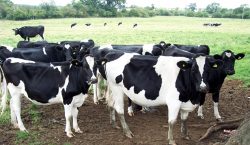

SOUTH Africa avoided a second recession in two years, with the economy growing by 3,1 percent in the three months to end-June, according to Stats SA.
This is much stronger than expected: A Reuters poll of economists had forecast growth of 2,4 percent.
SA’s economy shrank in the first quarter after more than 270 hours of load shedding, weak investment levels, a gold mining strike and a weak grape harvest.
In the second quarter, the mining sector rebounded with growth of 14,4 percent — contributing a full 1,0 percentage point to gross domestic product (GDP) growth.
This was thanks to the end of strikes at gold mines, but also due to a major rally in metal prices. Gold is currently trading at its highest level in six years, while platinum jumped from below $800/oz in June to above $930 currently.
Finance, real estate and business services increased by 4,1 percent in the second quarter. Trade, catering and accommodation increased 3,9 percent and general government services increased 3,4 percent.
The agriculture, forestry and fishing sector continued to shrink, however, and in the second quarter was 4,2 percent smaller than in the first. Construction was down 1,6 percent.
The economy was still only 0,9 percent bigger in the second quarter of 2019 than a year before.
On Tuesday, Stats SA revised the first-quarter GDP number down from –3,2 percent to –3,1 percent.
Ahead of the release of the data economists expected a “technical rebound” following the end of load shedding.
While SA avoided a recession, the outlook for the economy remains bleak. Investment levels remain subdued, and businesses are struggling.
The latest Absa Purchasing Manager’s Index (PMI) data shows weaker levels of private sector activity, and a grim outlook on future business conditions. Also, South Africa recorded a shock R2,88 billion trade deficit for July as imports exceed exports, the South African Revenue Service reported last week.
— FIN24
Sorry. No data so far.

